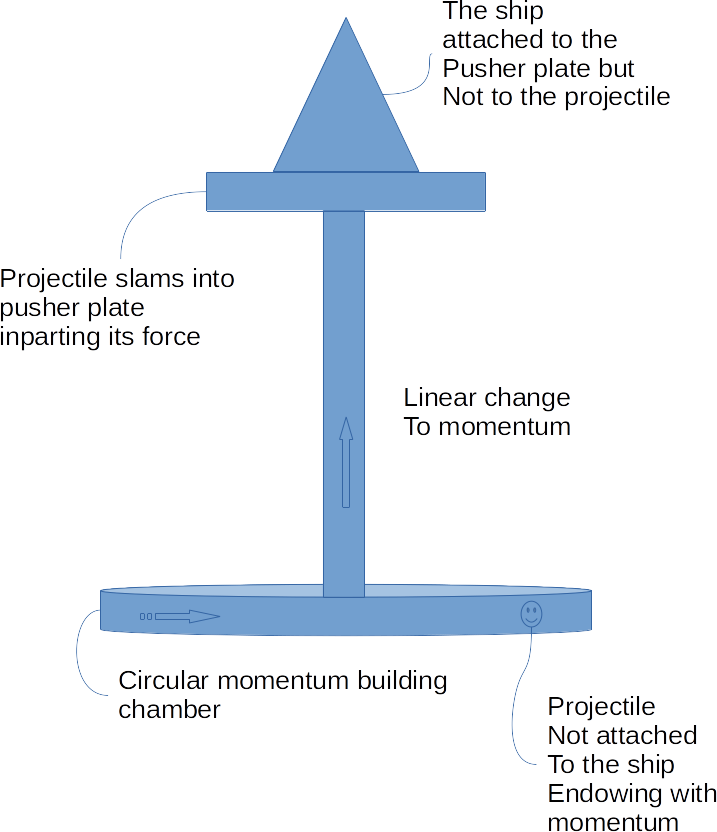A Propulsion System
This revision is from 2025/03/25 09:18. You can Restore it.
Works like a slingshot, the slingshot is encased in the ship and the released projectile imparts its momentum onto a pusher plate attached to the ship, moving it forward. The projectile is then picked up again and it repeats.
There is no exhaust and the fuel is reused endlessly as the fuel is a free moving object with momentum imparted to it using electricity, take the nautilus shell where using electrical energy the spiral acts as a chamber to accelerate a projectile in a circular motion, the projectile free floating, not connected to the ship, at some amount of momentum the projectile goes from circular motion to linear motion where it strikes the ship imparting its force and moving the ship forward. The projectile is then sent back to the chamber to endow it again with momentum, and the process repeats.
Imagine a man on a special sea-saw, he walks to the furthest edge of one side of the sea-saw, the sea-saw does remain horizontal as it requires a certain amount of force with tip to one side, the man then jumps up and down on the furthest side of the sea-saw providing enough force causing the sea-saw to tip downwards. The external force is gravity in this example, while in the ship the external force is momentum endowed in a projectile.
The LHC uses electrical power to accelerate particles, and the slingshot launch system also uses electricity to propel a projectile. In this case, the accelerator is encased inside the ship, and the projectile being inside the ship but not part of the ship.
The more elegant design has a nuclear power plant that magnetizes the fuel and turns it into a state that is not a particle such as plasma, the fuel is contained in a magnetic wall and the fuel in momentum is directed magnetically so it does not damage the material parts of the ship, the plasma is magnetized opposite of the pusher plate and magnetically repels the fuel pushing the ship forward. As the plasma loses momentum, it is again directed to the circular chamber to have momentum endowed to it.
A projectile in motion imparting its force onto another projectile implicates Newton's Third Law of Motion: Action and Reaction. A well-balanced system would cause the first projectile to lose all its momentum and then reintroduced into the circular motion chamber, a well-made system would pulse the propulsion in an engine design probably something resembling a handbag, where the bag storage is the circular momentum building chamber and the handle of the handbag is projectile heading towards the pusher plate and the pusher plate being at the apex of the handbag handle where the force is imparted to the ship. The handbag storage area is perpendicular to the handle, so it is more like a flat pot. Electromagnets are employed and magnetism propels the ship. A well-made engine design would pulse the ship forward continuously.

 IMMORTALITY
IMMORTALITY